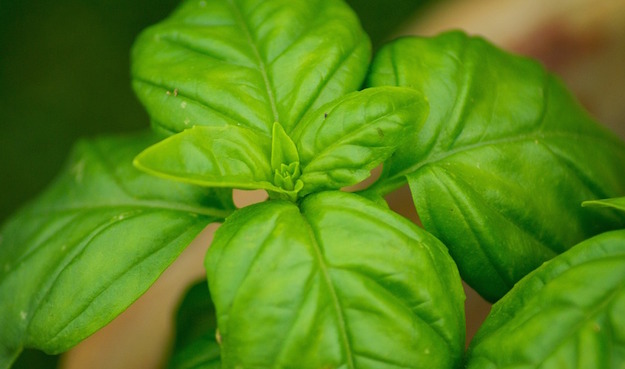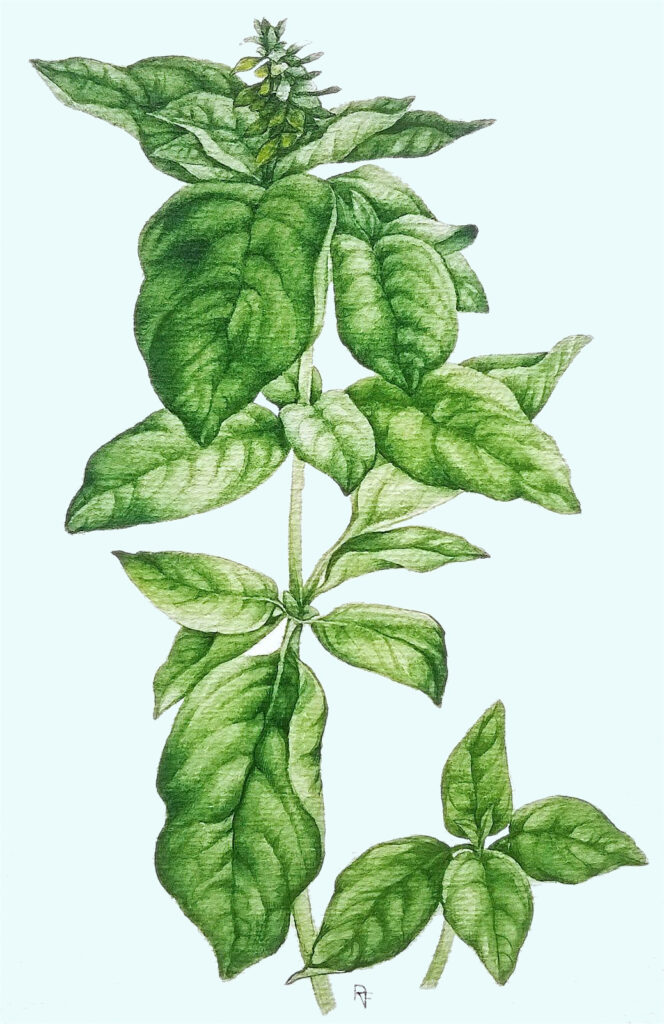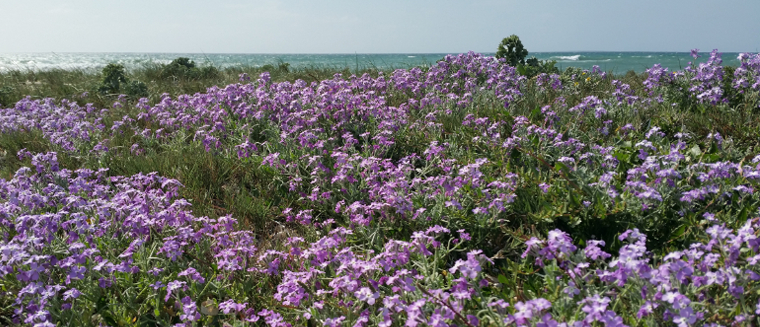
There is a fragrance in the intense and intoxicating gardens that spreads up to the kitchens and accompanies us in all the summer canteens. It is the scent of Basil, the “plant of the king”.
BASIL (Ocimum basilicum L.)
BOTANICAL CARD
A native of tropical Asia and India, it was introduced to Europe by Alexander the Great and in Italy by the Romans who thought it was sacred to Venus
Belonging to the Labiate or Lamiacee family, Basil is an annual herbaceous plant; It has a tap root, erect stem and very fragrant leaves, shiny, oval, opposite, with a margin interrupted by slight dentitions distant from each other.
The flowers, white and small, intensely perfumed, are collected in inflorescences called racemes. Four oval achens representing each future seeds originate from each flower.
The plant has never naturalized and therefore is not in the spontaneous state, it is only cultivated. It propagates by seed in spring (March – April); flowering takes place between June and September

The undisputed protagonist of Mediterranean cuisine, Basilico takes on different names in the various Italian regions:
Piedmont: Basiri, Basaco
Liguria: Baxaico, Baixericu
Lombardy: Basilich
Veneto: Basego
Emilia: Basalech
Tuscany: Basillico
Lazio: Bergamò
Abruzzo: Vasiliche, Vasanecola
Campania: Masilicoje, Masiricoja, Vasenicòla, Vasilicoia, Vasinicola
Calabria: Vasalicus
Puglia: Masiricòi
Sicily: Basilicu Majuri, Basiricò
Sardinia: Affabica, Fabbica, Afàbbia, Frabbica, Frabica
Credits
Author: Maria Beatrice Lupi. Naturalist, an expert in training, planning for sustainable development, participatory methodologies and European planning. Currently, she is involved in dissemination and education for sustainability.
Translation by Maria Antonietta Sessa



